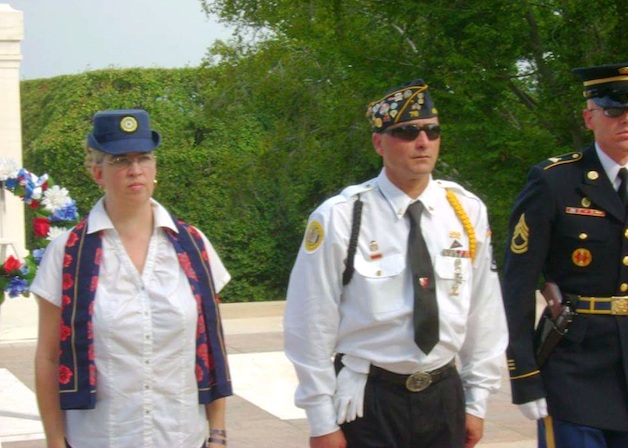ARLINGTON — The last time David Delancy visited Arlington National Cemetery, it was 1987 and three days before he would head off to boot camp.
“I was at the Vietnam Veterans Memorial, and there were these big, burly, bearded motorcycle riders on their knees, looking at the names on that wall, saying, ‘Hey, brother, I’ll never forget you,'” Delancy said. “As I went into the military, it made me think of our brothers and sisters in all the branches of service.”
When David and his wife, Dorine, visited “the other Arlington” to lay a wreath on the Tomb of the Unknown Soldier Aug. 30, it marked Dorine’s first time in Washington, but even Delancy was treated to a new experience during their tour of the nation’s capitol.
“We went to the wall of the Pentagon that had been destroyed, the weekend before the anniversary, and it was lit up with all these spotlights,” Dorine said. “It illustrated that those attacks were a moment of modern history. It was quite enlightening.”
The Delancys made the trip on behalf of Arlington American Legion Post 76, and arrived at the tomb 45 minutes early, so that Dorine could be briefed on the proper procedure by the guard.
“As the first note of Taps played a monarch butterfly landed on the wreath,” Dorine said. “It flew around the tomb, then landed on the wreath again five minutes before Taps ended, so that was poignant.”
Dorine was disappointed but not surprised to learn that she would not be able to bring the wreath back home, since any laid at the tomb are archived that night, but she’ll treasure her memories of the presidential monuments and war memorials.
“Everything was just unbelievable,” Dorine said. “We couldn’t get close to the White House, because it was blocked off, but we saw everything else.”
Delancy was struck by the fact that the World War II Memorial, completed in 2004, complemented the monuments to Korea and Vietnam by forming a chronological journey through U.S. military history.
“I grew up during the Vietnam era, so the feelings I had were different from those of my dad and his generation,” Delancy said. “The names on that wall were people they knew and served with. Still, it invokes a lot of emotion in anyone who’s served.”







